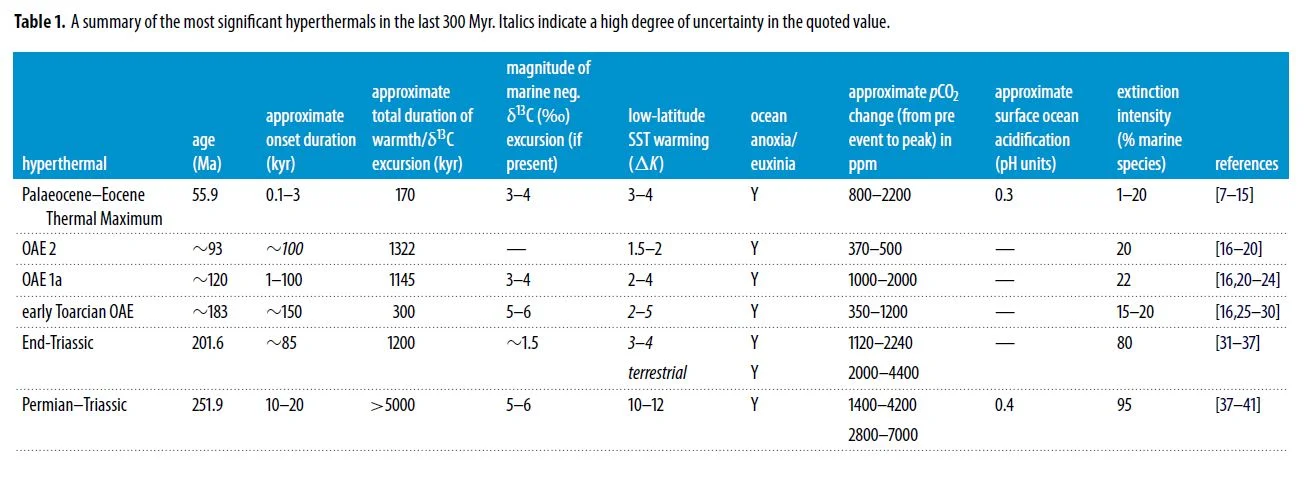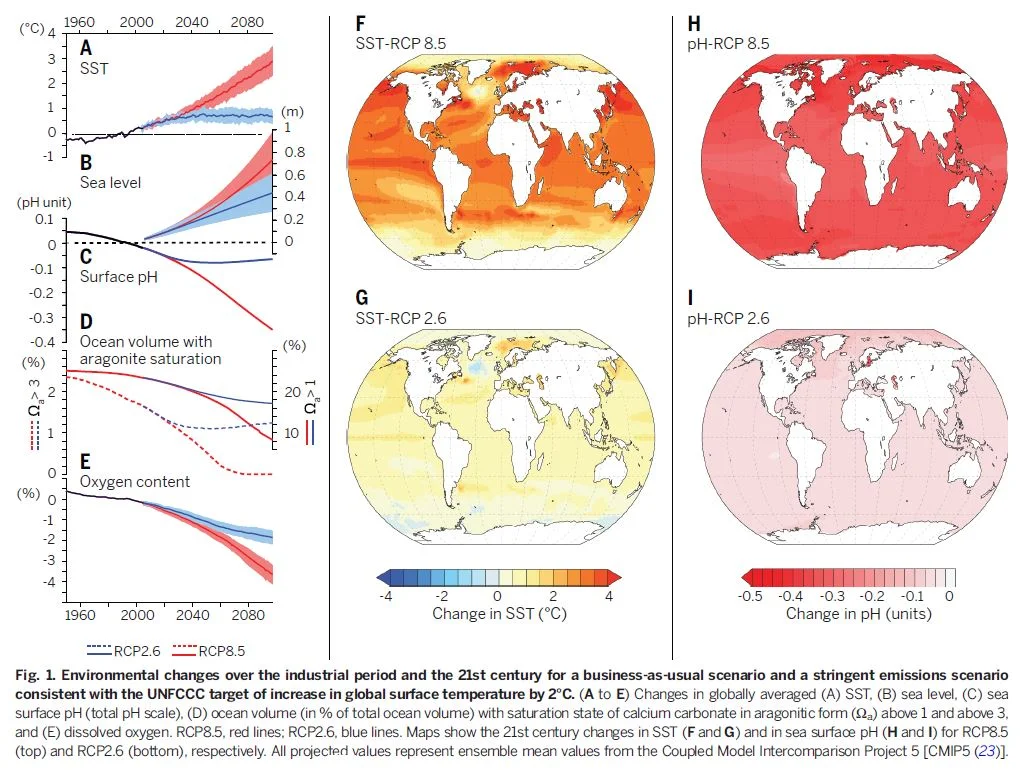Hyperthermals - insights into our warm future from past rapid changes in climate
/There are few, if any, direct analogues for anthropogenic climate change in the geological record. This is because it is occurring at a pace that is rarely seen naturally, short of those rare times when the Earth is hit by an asteroid (e.g. 66 million years ago). There are events that occur natural that are however relatively similar - these are known as the “hyperthermals”. These are geological rapid, relatively short events (<1 million years) characterised by rapid warming and caused by the injection of carbon to the climate system – typically a doubling or more of CO2 (see table below for a list of the most recent ones).
A summary of the most significant hyperthermals of the last 300 million years. Italics indicate a high degree of uncertainty. From Foster et al. (2018) - click here, also see original paper for references.
We @thefosterlab, with Celli Hull, Dan Lunt, and Jim Zachos organised a discussion meeting at the Royal Society last September to bring together scientists from many branches of the Earth Sciences to advance our understanding of these events and crucially try and fathom what they can tell us about our warm future. This research has now been written up and turned into a special volume of the Philosophical Transactions of the Royal Society (here). I recommend you go and read them as many are open access and free to download.
(Briefly) What can we learn from hyperthermals?
Exactly how the climate will respond to anthropogenic forcing is currently uncertain because our understanding of the climate system is incomplete. Hyperthermals, however paint a very consistent picture of how the Earth has responded in the past intervals of rapid and massive carbon addition (see table above). These features include:
(i) rapid global warming of >3 C.
(ii) a reduction in oceanic oxygen content leading to ocean anoxia and/or euxinia.
(iii) ocean acidification of around 0.3 to 0.4 pH units.
(iv) the hydrological cycle intensified with wet regions generally getting wetter and dry regions drier.
(v) continental erosion/weathering rates were enhanced.
(vi) relatively large biotic responses occurred in the first half of the Phanerozoic (Paleozoic and early Mesozoic mass extinctions often associated with hyperthermals), and muted or mixed responses in the latter half of the Phanerozoic. But in each case the hyperthermals are associated with biotic disruptions.
(vii) the Earth system takes 100's of thousands of years to recover once C-emissions have stopped.
These changes to the system were likely caused by the introduction of 10,000 to 40,000 Pg of C over a couple of millennia. Where this carbon came from is debatable but CO2 from flood basalt eruption and emplacement is likely involved (see here and here). Although this is rapid for geology, the rates of carbon addition are still likely 10x less than current rates (i.e. less than 1-2 Pg C per year vs. 10 Pg C per year; though this is controversial – see this paper in our special volume).
As the figure above from Gattuso et al. (2015, Science) shows, we have seen a very similar response to the Earth System to current anthropogenic emissions, for instance in response to increasing atmospheric CO2 by 40% over the last 150 years we have seen sea surface temperature increase by 0.5 C, ocean acidification by 0.1 pH unit and a decrease in ocean oxygen content. Projections by the IPCC and others suggest we are heading on a similar path as the ancient hyperthermal events (see figure above).
A key difference between what we are currently doing to the Earth System and what happened during these hyperthermal events however is the rate of current change is much much faster. The magnitude of CO2 change from any C emission, and hence the full magnitude of warming, anoxia, ocean acidification and extinction that occurs, is a function of rate, due to the timescales of a number of key negative feedbacks (see this paper). Why the Palaeozoic hyperthermals are associated with significantly greater extinction rate than more recent hyperthermals is currently not known (see table above). However, a consensus is emerging that it is the extreme heat and anoxia that are the likely “kill mechanisms” (see this paper in our special volume). Given that the rate of carbon addition during our “anthropogenic hyperthermal” eclipses that of the Palaeocene Eocene Thermal Maximum (PETM), at the very least we are likely looking at a potential future with a more severe impact on life on Earth than any climate change event of the last 56 million years. Exactly how severe however remains perhaps the biggest unknown.






